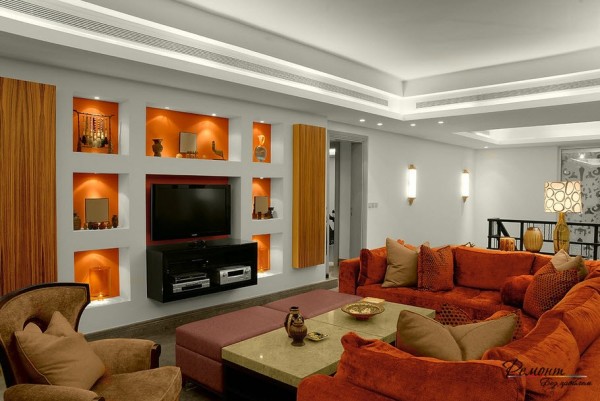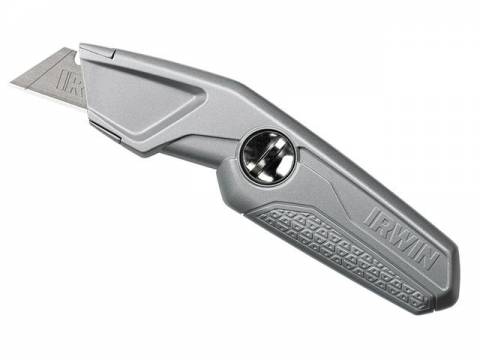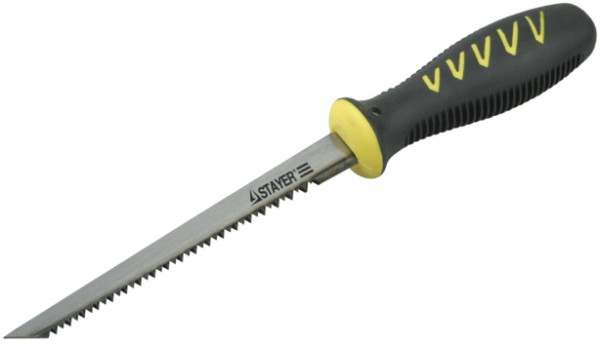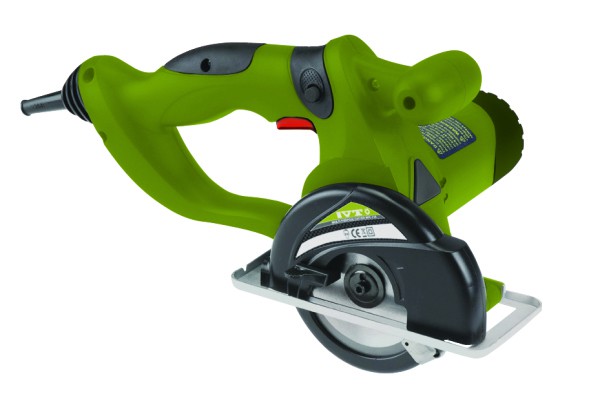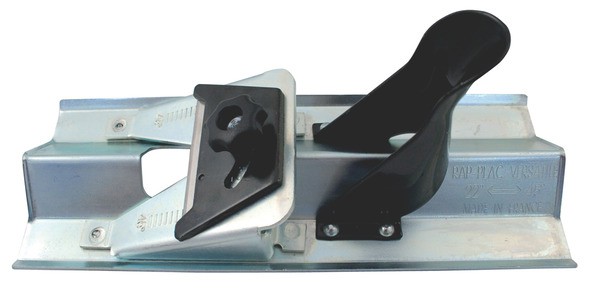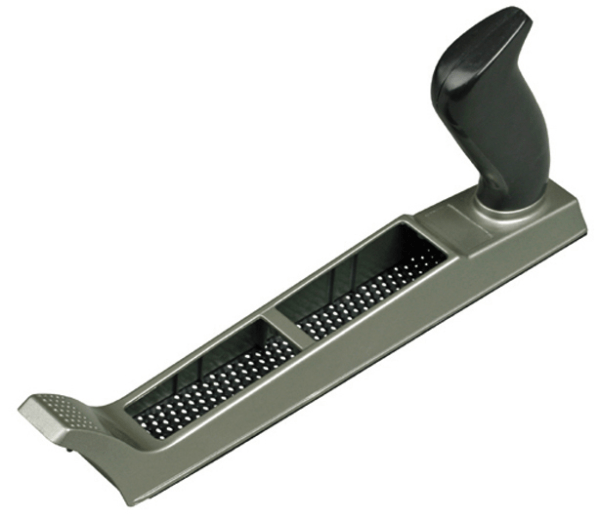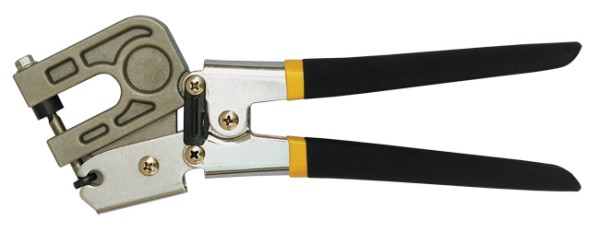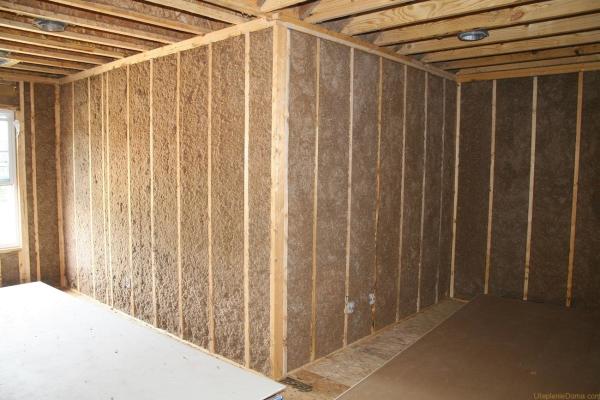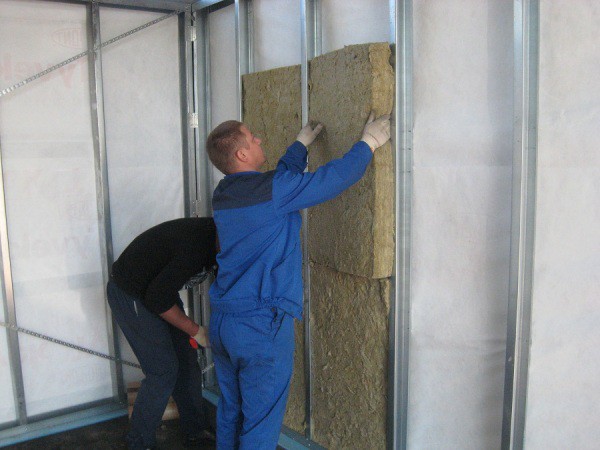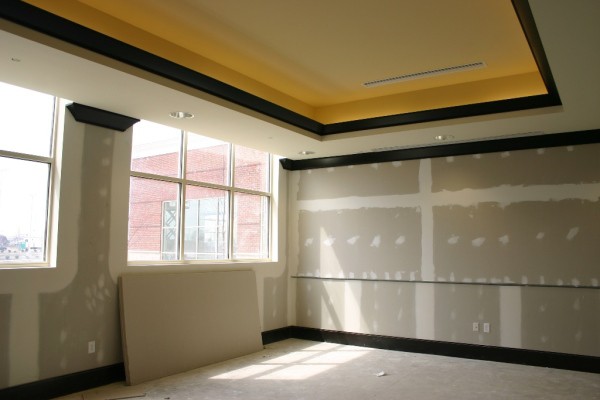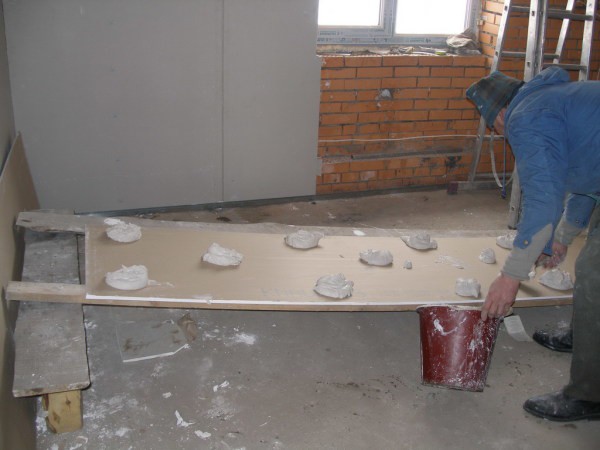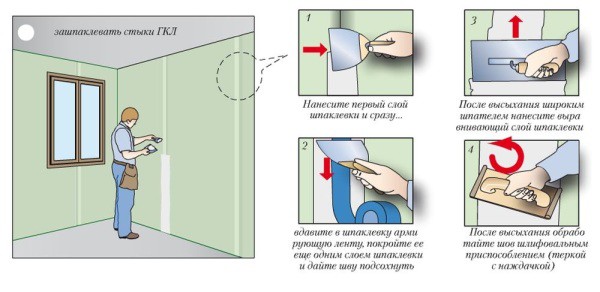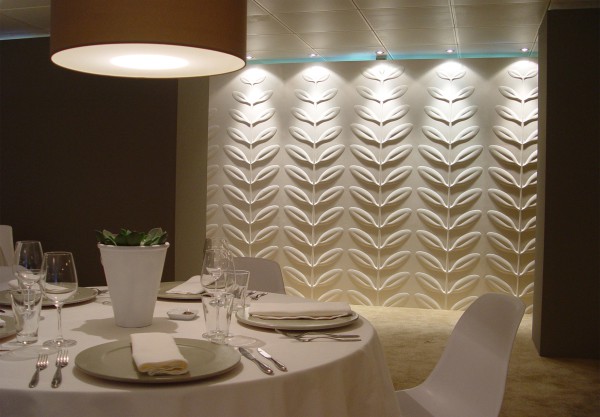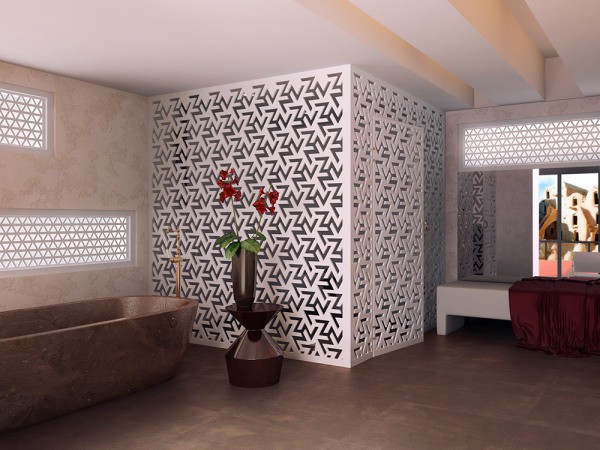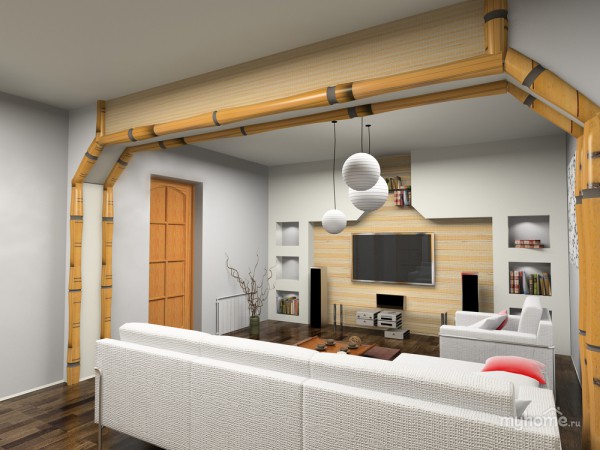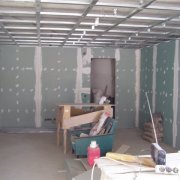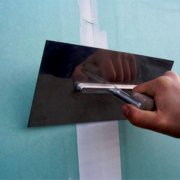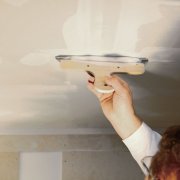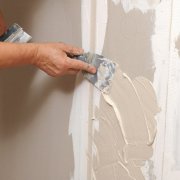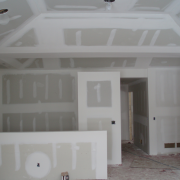Plasterboard wall decoration: leveling and decorating vertical surfaces
The design of a modern interior is almost impossible to imagine without drywall, which can rightfully be called a universal material. Various methods of processing and installation of GKL and GVL, allow not only to align and decorate the walls, but also to transform the geometric shapes of the room, create designs that replace cabinet furniture in the room.
Our instruction will be the answer to the most exciting question for our readers: "How to finish the walls with drywall yourself?" The video presented in this article will also help to cope with this work.
The content of the article
Wireframe alignment
Before talking about how to decorate a wall with drywall, bearing in mind the decorative part of the work, you need to first understand how a simple surface alignment is performed. You need to purchase the necessary tools, learn how to cut and process the edges of sheets with their help.
There are two ways to install GCR on the walls. We’ll tell you about both, and you’ll decide which plasterboard wall decoration technology is more preferable for you.
Sheathing: useful tips
The cost of wall cladding with dry stucco on the crate is slightly higher due to the cost of acquiring material for the frame. But it allows you to isolate the walls from noise and cold, placing a heater in the interior of the structure.
- Warming of internal walls and plasterboard decoration is most often done in private houses when the facade, for example, is plastered (see Exterior decoration of the facade of the house with stucco: choose the option) - either the building requires double-sided thermal insulation. In multi-storey buildings, such cladding will save the situation if the apartment is angular, and even from the leeward side.
- This method has one minus. The frame structure takes about 5-7 cm on each side of the usable area of the room, which is due to the thickness of the elements of the subsystem and the casing. Therefore, if the apartment is small in size, it is better to give preference to the glue version of the alignment, making frame cladding with insulation only on the outer walls.
Tool selection
DIY wall decoration with drywall, requires certain investments. The first item of expenditure is the purchase of the necessary instrument. Its set depends on the type of installation of the gypsum board, and the type of material used for the crate.
- In any case, you need a special knife or cutter, as well as two types of planers: edge and peeling. You will find their appearance and purpose in the table below. The remaining tools are general construction - level, marking thread, tape measure, punch, screwdriver, hacksaw.
| Special tools | Appointment |
| As you can see, a drywall tool is like a regular clerical knife. But unlike him, here are reinforced blades. |
| The hacksaw shown in the photo can cut many other materials. Its narrow blade, pointed at the end, is ideal for cutting small holes and cuts in a sheet along a curved line. Such a hacksaw will replace the jigsaw. | |
| Professionals performing large volumes of work use a surface gage cutter to cut drywall. But if you get a circular saw like in this picture, you can cut not only gypsum plaster, but also any other materials. | |
| This tool has a trapezoidal blade, and is used for cutting edges at an angle of 45 degrees. | |
| Using a peeling plane, the canvas of which looks like a grater, the surface of the prepared edge of the drywall sheet is leveled. This allows you to get a flat and smooth end. | |
| This tool is designed to connect metal profiles to each other by means of cutting with bending. It allows to do without self-tapping screws when mounting the frame.
|
Materials
To equip the subsystem, both metal profiles and wooden blocks can be used. Simple alignment does not imply the execution of curved elements for which a profile is needed, and if the room does not have high humidity, it is quite possible to choose the latter option.
So:
- If the walls are supposed to be insulated, bars are used for the battens. Their cross section is selected taking into account the thickness of the insulation. If this is, for example, minvat 40 mm, then the size of the bars should be at least 55 * 55.
- The difference of 15 mm will provide free air circulation, which is especially important for organic thermal insulation materials. If the surface of the insulation is flush with the surface of the frame, as is done in the picture below, you will have to install a counter grill. Sheathing without insulation can be performed on a rail 20 * 40 mm.
- The use of heaters based on foamed polyethylene ensures heat conservation at a smaller thickness. Their price is slightly higher, but due to the reduction in the cost of buying the bars, since the size will be less, it is fully justified. In addition, there is no need for a vapor barrier layer.
- The disadvantage of a wooden crate is that leveling its space by placing pieces of plywood under the fastener is inconvenient. And since the walls are rarely even, most masters prefer to deal with the profile. It is mounted on suspensions, with the help of which the plane is vertically aligned.
- To install the frame in this case, you need a guide profile PPN28 * 27, and a rack profile PS60 * 27. They are fixed to the suspensions with self-tapping screws with a press washer, and the suspensions themselves are fixed to the base with dowels. Cross connections of load-bearing elements can be carried out by clamps of the “crab” type, or by a notch with a limb.
- The step between the frame elements is dictated by the size of the drywall sheets, and the need to fasten it every 60-65 cm. In most cases, sheets 1200 * 2500 are used for mounting on the crate. The first digit is the width, and it is always constant, and the length can vary between 2-4m.
- The smallest sheets are convenient for frameless installation, the large format is suitable only for working with a special lift. The indicated size is the golden mean, the thickness of the sheet is usually taken 10 or 12 mm. For sheathing, not only drywall, but also gypsum fiber sheets are used.
- They are distinguished by the absence of a cardboard cover, as they are reinforced by adding dissolved pulp or fiberglass to the gypsum. The high strength of the GVL makes it possible to use them even for flooring. They also have better soundproofing properties compared to GCR.
As for the installation, it is carried out in both cases in the same way. If you are interested in how to decorate the wall with drywall on the crate, for clarity, it is better to watch the video.
We will not go into details, as we want to talk more about frameless alignment options, and about wall decoration with decorative panels.
Glue installation of gypsum sheets
We must say right away that wall decoration with drywall without a frame is possible only if the base base does not have large deviations from the plane. For example, if the enclosing structures are erected from large-format panels, blocks, or calibrated timber.
In other cases, this is unlikely to succeed. That is why this method has not gained much popularity, and, nevertheless, readers are also interested in it.
So:
- In any case, do-it-yourself wall decoration with drywall, which does not require the installation of a frame, is greatly simplified, and for small rooms, the area of which is undesirable to reduce, this is ideal. In this case, gypsum-based adhesive or polyurethane foam is used to fix the sheets.
- Almost all manufacturers of gyproc also offer gypsum glue, which, like all building mixtures, is sold dry and packaged in 25-30kg bags. In principle, it can be starting puttyin which PVA glue is added. It is inconvenient to glue whole sheets, they can be cut into strips, the length of which should correspond to the height of the room.
- The surface is prepared for installation in the same way as if plastering was carried out. The walls need to be cleaned, primed, hung up, installed beacons and tension the cords along the perimeter and diagonals. Before finishing the walls with drywall, the back side of the sheets must also be primed.
It is better to use glue and soil composition of the same company as the facing material - this will provide the best adhesion. If the walls are fairly even and well prepared, there will be no problems with the installation of gypsum board.
Another way
There is another technology for frameless wall cladding with gypsum board - it does not use gypsum glue, but mounting foam. For this purpose, it is better to take sheets of the smallest format and thickness - it will be easier to work.
- Foam is not glue, but just a filler. Therefore, it is impossible to mount only on it - moreover, rigid GKL fastening to the wall is required. Sheet cladding has considerable weight, and therefore is additionally fixed to the base with self-tapping screws. This is done as follows: two people apply the element to the wall, and the third drills it in the places of fastenings.
- The drilling force is calculated so that there are marks on the base. Then the sheet is laid aside, and full-fledged holes are drilled at the designated points. On an integral GKL or GVL, there must be at least ten of them. Then everything is simple: choppies are clogged into the finished holes, the cladding element is installed in a regular place and screwed with screws.
- With their help, you can align the position of the drywall in level. It will be more convenient to do this if, before mounting the sheet, on its back side next to the holes, glue small pieces of foam rubber. To fill the internal space of the structure with foam, holes of such a diameter are drilled near the fasteners so that the bottle nose is placed in them.
- Further wall decoration of drywall is made similarly in all cases. Joints between sheets, self-tapping heads, holes - all this must be puttied (see How to putty drywall quality) How this is done is shown in the picture above.
Under the wallpaper sticking, such preparation will be enough. Just so that the GKL color shell does not shine through them, the sheathed surface needs to be treated with a special primer for the wallpaper - a white pigment is added to it. If the walls are painted, then they will have to be puttied over the entire area.
Decorative gypsum panels
Plaster glue is used not only for the installation of drywall. In the same way, walls are decorated with gypsum panels.
This option can be called decor rather than cladding.They are not glued throughout the room, but only one wall or a certain area is allocated. Such panels have a three-dimensional relief, and a small format.
So:
- Dimensions of 3D panels comply with the international standard 600 * 600 mm. This is the largest format, but there are also variations in the form of tiles 200 * 200 mm in size, or 240 * 70 mm planks. The latter option imitates the plank not only in size and shape, but also in appearance.
- Most often, gypsum panels are seamless. That is, the contours of the relief in them are joined, as is done on the wallpaper, creating the impression of a monolithic pattern. The seams between the cladding elements are then sealed with white sealant, sanded, and painted. To give the surface a shine, it is finally treated with panel varnish.
- Speaking about wall decoration with gypsum material, you can not ignore the decorative drywall. These are the most common sheets, 1200 * 2500 * 12.5 mm in size, only decorated with surface milling, or having through perforation.
- There are options that are used to improve the acoustics of the room, but there are practically openwork ones that are used to arrange decorative partitions, decorate drywall niches, and false ceilings. The cost of decorative drywall depends on the processing option and the complexity of the picture.
In the interior, this material looks very original, and few people realize that such a beauty was created from the most ordinary dry plaster. True, its installation is carried out according to individual technology and according to the drawings of the manufacturer.
Conclusion
As for the design solutions that allow transforming the volume of the room and its shape, which include zoning and decorative partitions, arches and niches, this is a separate topic for the article.
- We only note that the appearance of the premises of a standard form, with the help of ordinary drywall and a metal profile, can be changed beyond recognition. And it does not matter that such structures take up a bit of space.
But, the creation of working niches allows you to get rid of cluttering cabinets and bookshelves - and this is very important for rooms with a small area. A large room, on the contrary, can be made more compact by installing a zoning partition.
So, with the help of drywall, your home can find an extraordinary and cozy interior - you just need to make a little effort for this.
